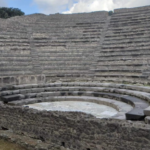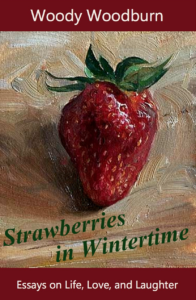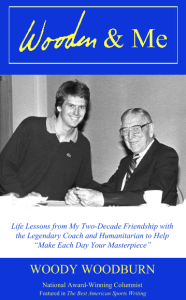Woody’s new novel “The Butterfly Tree” is available at Amazon (click here), other online retailers, and orderable at all bookshops.
*
Imagine being on the last day of a busy business trip. You again rose at the crack of dawn, began work at 8 o’clock, and spent the next 12 hours on your feet with rarely a break. At long last your long workday is over, although you still face a mile trek by foot back to your hotel.
Surely, as soon as possible, you would want to find some dinner. Even more surely, with your feet sore as a soldier’s after a blistering march, you would not want to instead spend the next two hours walking and stooping, walking and bending down, walking and picking up debris.
And yet that is what Robert Stratton did recently, not as punishment but on his own accord, after refereeing a gargantuan invitational volleyball tournament in Las Vegas. In the City of Sin, this Good Samaritan shone bright as a neon sign, a 25-year-old inspiration for young people and older ones alike.
Robert, a former boys’ varsity volleyball coach at Nordhoff High, admires Coach John Wooden and often recites Wooden-ism maxims, such as: “You can’t live a perfect day without doing something for someone who will never be able to repay you.”
On this occasion, Robert lived a perfect day by what he did at night for myriad someone elses. After working his last match of the long day, which was also the ending match of the entire tournament, as players and coaches and spectators were emptying out of the cavernous Convention Center, Robert began filling two large heavy-duty trash bags.
To do so, he canvassed all 80 courts, head down like a beachcomber on a shore of hardwood instead of sand, searching not for seashells or sea glass but for reusable aluminum water bottles and other expensive hydration flasks left behind by players.
The first time Robert performed a similar scavenger hunt at a smaller tournament, he gathered about 50 flasks; he doubled that the next time; and his most recent effort resulted in a whopping total north of 200.
What does Robert do with his hauls? He hauls them home to Seattle – in checked bags and carry-on luggage this last time, no small feat in itself with close to 100 bulky pounds of empty bottles – where he is in the University of Washington’s Doctor of Physical Therapy program. After washing thoroughly, he fills them with fresh water and personally hands them out, along with kits he prepares containing toothbrushes, toothpaste, granola bars and other goodies, to unhoused individuals.
“A lightning bolt hit me,” Robert recalls of the inspiration to round up abandoned bottles. “I realized that all these lost hydro flasks were going to wind up in a landfill. And if I give out one-time-use plastic bottles of water, they’ll also go to the landfill. But I can give new life to an expensive flask and keep two bottles out of the landfill.”
In addition to being ecologically good, it is good for the soul.
“A quality reusable bottle tops a disposable bottle in showing the recipient that someone cares,” Robert allows, explaining he keeps a small supply of filled flasks and care kits in his car. Whenever he sees a person in need, he stops and gives and takes a step toward living another perfect day.
“Spreading kindness takes so little effort,” Robert goes on, modestly understating the great effort his mission of goodwill requires. “But I think it can have big rewards – I certainly feel rewarded.”
Robert Stratton stands 6-foot-4, my height, yet I still look up to him as a role model of kindness.



 “We do not take a trip,” John Steinbeck wrote in his 1962 gem, Travels with Charley: In Search of America, “a trip take us.”
“We do not take a trip,” John Steinbeck wrote in his 1962 gem, Travels with Charley: In Search of America, “a trip take us.”


 Personalized Signed copies of WOODEN & ME: Life Lessons from My Two-Decade Friendship with the Legendary Coach and Humanitarian to Help “Make Each Day Your Masterpiece” and “Strawberries in Wintertime: Essays on Life, Love, and Laughter” are available at
Personalized Signed copies of WOODEN & ME: Life Lessons from My Two-Decade Friendship with the Legendary Coach and Humanitarian to Help “Make Each Day Your Masterpiece” and “Strawberries in Wintertime: Essays on Life, Love, and Laughter” are available at 

